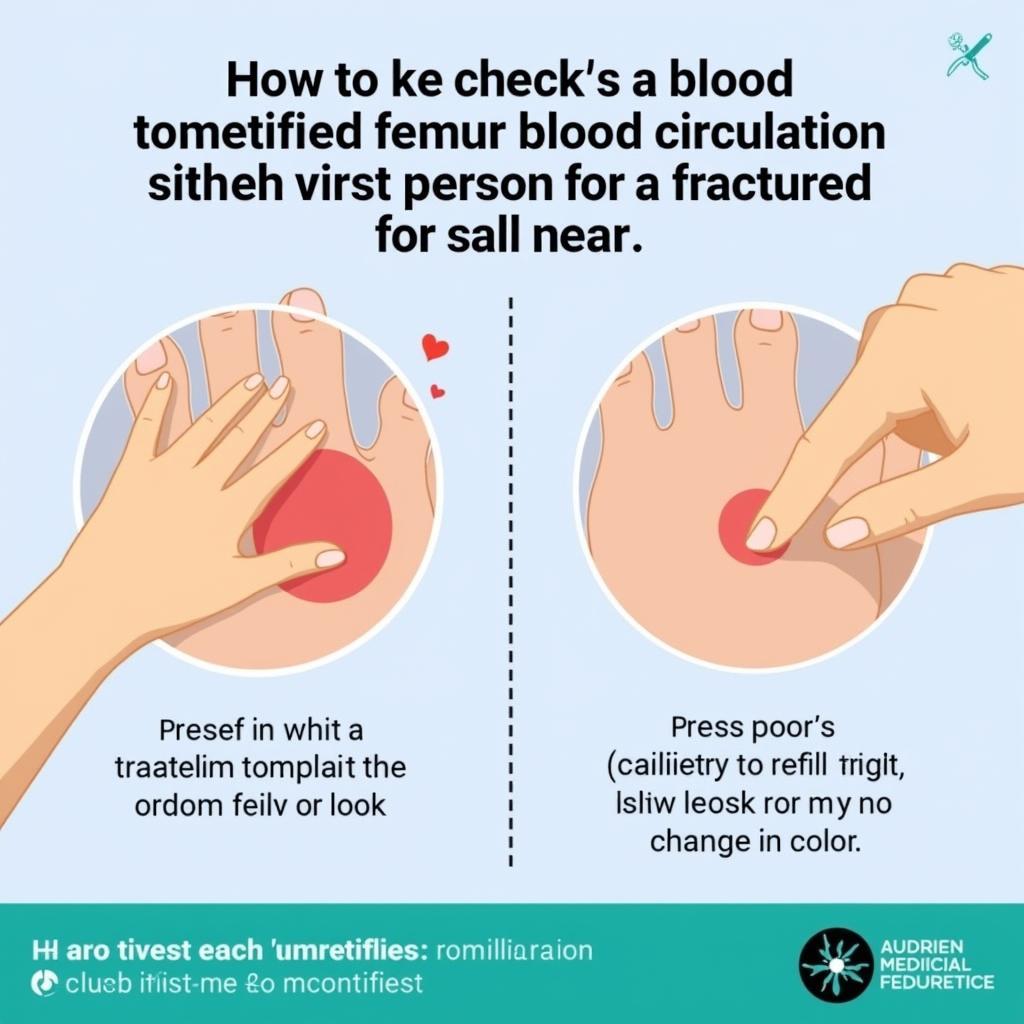Femur fracture immobilization is a critical first aid skill that helps reduce pain and prevent further injury to victims with a broken femur. Mastering this skill can help you respond effectively in emergency situations, contributing to the health and safety of the injured. Are you ready to learn about this essential life skill? Let’s explore the details of femur fracture immobilization together.
The Importance of Femur Fracture Immobilization
The femur is the largest and strongest bone in the human body, playing a vital role in movement and weight-bearing. A femur fracture can cause excruciating pain, internal bleeding, and even shock. Femur fracture immobilization minimizes the movement of the broken bone, reducing pain, preventing further damage to blood vessels and nerves, and facilitating safer transport of the victim to a medical facility. Learning basic soccer skills can also enhance your agility and dexterity, which are helpful in performing first aid. basic soccer skills
When is Femur Immobilization Necessary?
Femur immobilization is necessary when you suspect a victim has a femur fracture. Some signs of a femur fracture include: severe pain in the thigh, thigh deformity, inability to move the leg, swelling, and bruising.
Steps to Immobilize a Femur Fracture
Femur fracture immobilization should be performed carefully and with proper technique. Here are the basic steps for immobilizing a femur fracture:
- Ensure safety: Assess the scene and ensure safety for yourself and the victim.
- Assess the victim: Check the victim’s condition, including breathing, pulse, and consciousness.
- Call for emergency help: Immediately call emergency services (911 or your local emergency number) for professional medical assistance.
- Prepare materials: Gather necessary supplies such as splints, bandages, gauze, etc. If specialized splints are not available, you can use rigid, straight materials like wooden boards or sturdy sticks.
- Immobilize the femur: Place the splint along the length of the leg, from the hip to beyond the foot. Secure the splint with bandages or straps, ensuring it is snug but not too tight.
- Check circulation: Check blood circulation in the foot by pressing on a toenail. If the nail bed quickly returns to a pink color, circulation is good.
- Monitor the victim: Continuously monitor the victim’s condition until emergency responders arrive.
Important Considerations
- Do not move the victim unless absolutely necessary.
- Do not attempt to realign the fractured bone.
- Keep the victim warm.
- Closely monitor the victim’s condition and report to emergency responders upon their arrival.
 First aid provider checks blood circulation in the foot of a patient with a splinted femur fracture to ensure proper circulation.
First aid provider checks blood circulation in the foot of a patient with a splinted femur fracture to ensure proper circulation.
Mastering soccer skills can also help you improve fitness and endurance, which are important for providing first aid and caring for injured individuals. soccer skills
Mr. Nguyen Van A, a first aid expert at Hospital X, shared: “Femur fracture immobilization is a vital life skill that everyone should know. It can help save a life in an emergency situation.”
Conclusion
Femur fracture immobilization is an essential skill that can help reduce pain and prevent complications for victims with femur fractures. We hope this article has provided you with useful information about femur fracture immobilization techniques.
teaching children face washing skills lesson plan
FAQ
- What should I do if specialized splints are not available?
- How do I know if a victim has a femur fracture?
- Should I attempt to realign the fracture before immobilization?
- How often should I check blood circulation in the foot?
- When can I remove the splint?
- What precautions should I take when transporting a victim with a femur fracture?
- Can femur fracture immobilization be applied to children?
Common Scenario Questions
- Scenario 1: You are walking down the street and witness a traffic accident. The victim is lying motionless, showing signs of a femur fracture. What will you do?
- Scenario 2: You are hiking with friends. One person in the group falls and may have fractured their femur. How will you handle the situation while waiting for rescue?
Suggested Related Articles on Our Website
You can also refer to our articles on how to improve pubg skills and administrative communication skills wattpad on our website.